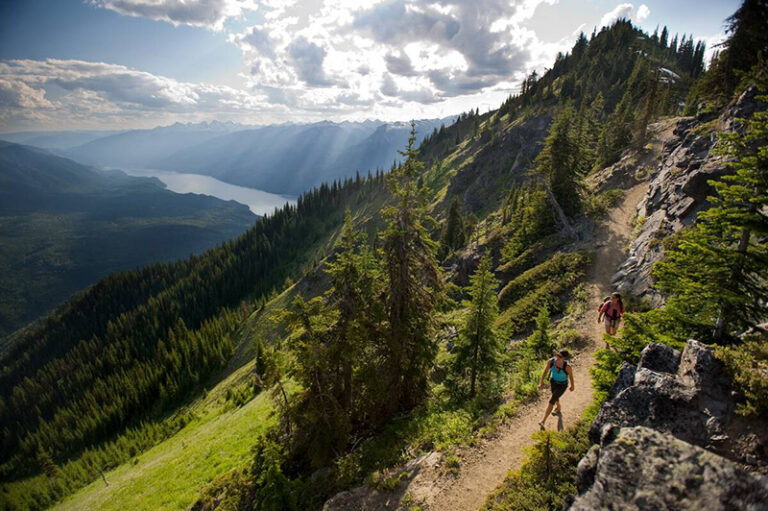Skiers vs. snowboarders. One plank vs. two. Sticks vs. boards. It is a conflict as old as time; well, it’s at least as old as the early 80s when snowboarding started gaining popularity. This new way of riding or surfing the mountain was foreign to many skiers and resorts. In its early days of the 1970’s snowboarding was banned from most resorts. If it wasn’t banned, it’s because there were no boarders to banish from the grounds. At most resorts that changed in the 80’s thanks to the rise of skate boarding culture and accessibility of boards.
Many snowboarders were deemed “punk teenagers,” bringing their street skills, bravado, and a little chaos to the mountain. This contrasted with the orderly air and somewhat country-club feel of many resorts at the time.
Snowboarders took elements from their summer skateboard days to a new winter playground. When on the streets and skate parks, skaters where grinding curbs, riding rails, and carving pools. This eagerness to ride features, try new tricks, and push what could be done with this new technology translated into terrain parks that quickly improved and evolved.
This new style of riding was believed to be a danger. Many patrol directors refused to allow snowboarders, citing safety concerns. For example, snowboarders have blind spots thanks to their sideways stance, and they had the wiliness to the get air or pull a trick on any natural feature. This lead to the “unpredictable nature” of their riding. They were perceived as hooligans who can pop out of any place on the trail, wreak havoc for hordes of Midwestern family vacationers, break femurs, and scrape all the snow off the mountain.
Most of this turned out to be false. Board on ski accidents where no more prevalent than ski on ski accidents. All beginners—skiers and snowboarders— and a few gapers scrape the snow off the mountain. Boarders also adopted the safety code expected at most resorts since being out riding was way better than recovering from an injury.
Some snowboarders didn’t always help their cause, however, when they mocked the stuffiness of skiers. They would also grind parking lot barriers and picnic tables, and build kickers in the middle of trails.
Fortunately, the boarder vs. skier sentiment changed most drastically with the revolution of freestyle skiing and the advent of the terrain park. The first Freestyle Skiing World Cup was in 1980, and it became an Olympic event in 1992. This event showcased tricks skiers were taking from snowboarders at the terrain park such as riding switch, grinding rails, and combining huge aerials.
Terrain parks started popping up at many resorts in 1989/90 season. Mountains initially designed terrain parks with snowboarders in mind, taking features found in skate parks such as rollers, boxes, table tops, pipes, and rails and putting them on the snow. It was soon realized that skiers also wanted to test their skills in the park.
The love of competition and camaraderie brought the two worlds together. If a boarder can do it, a skier can, too. Soon skiers and boarders were tearing up terrain parks and pushing each other to progress their sports.
Having the frontier notion of expansion, mountains of the Inland Northwest adopted this new way of moving down the mountain. But initially it wasn’t fast to catch on, and snowboarding filtered to the area through the mid 80’s.
Silverhorn, precursor to Silver Mountain, was one of the first to allow snowboarding, according to long time snowboarder and multiple trophy winner Darrin “DD” Dillon. Having only been around in its current configuration since 1990, Silver Mountain has always allowed snowboarding.
49 Degrees North officially allowed snowboarding starting with the 85-86 season. Gary Deaver, who was a patroller that season and is now the current ski patrol director, would test snowboarders’ competence twice a day. Patrollers would take snowboarders to the top of Chair 3. If they passed some skill trials, they were taken to the summit and given a pass. After this initial trial season, snowboarders were allowed to buy lift ticket like everyone else and permitted to wreak havoc—or not—just like skiers.
Both Lookout Pass and Mt. Spokane had no set policy and let people ride how they wanted. Matt Sawyer of Lookout Pass says, “they have been on the mountain since the first one showed up around 1982.”
Although much of the historic feuding is long gone, there are a few resorts out there that still don’t allow snowboarding. In 2016 a group of snowboarders sued Alta Mountain in Utah to allow boards, but the mountain’s right to operate on their own terms won out legally. But here in the Inland Northwest, we welcome all styles of riders, and have for a long time.
[Sponsored by Ski the NW Rockies]













